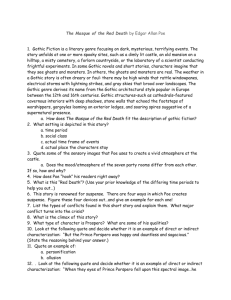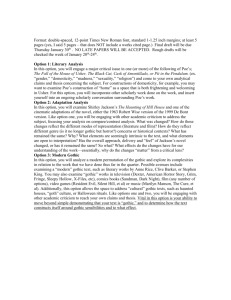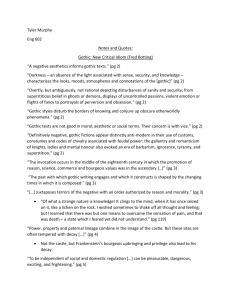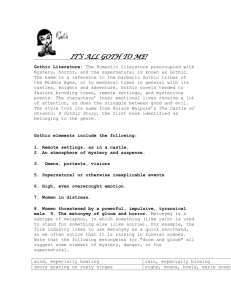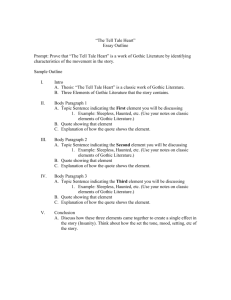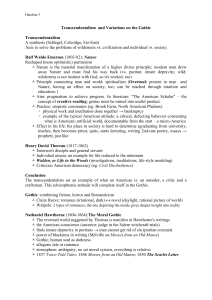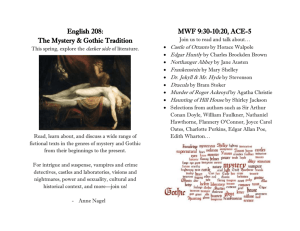To Kill A Mockingbird Reader Response Journal Chapters 8
advertisement
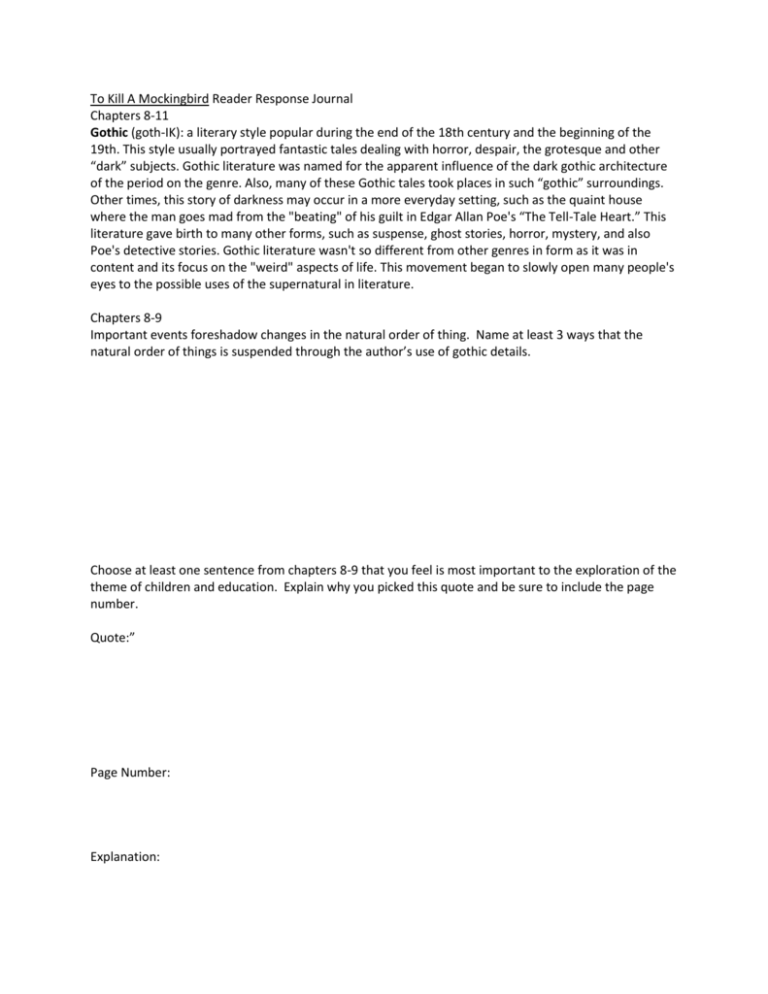
To Kill A Mockingbird Reader Response Journal Chapters 8-11 Gothic (goth-IK): a literary style popular during the end of the 18th century and the beginning of the 19th. This style usually portrayed fantastic tales dealing with horror, despair, the grotesque and other “dark” subjects. Gothic literature was named for the apparent influence of the dark gothic architecture of the period on the genre. Also, many of these Gothic tales took places in such “gothic” surroundings. Other times, this story of darkness may occur in a more everyday setting, such as the quaint house where the man goes mad from the "beating" of his guilt in Edgar Allan Poe's “The Tell-Tale Heart.” This literature gave birth to many other forms, such as suspense, ghost stories, horror, mystery, and also Poe's detective stories. Gothic literature wasn't so different from other genres in form as it was in content and its focus on the "weird" aspects of life. This movement began to slowly open many people's eyes to the possible uses of the supernatural in literature. Chapters 8-9 Important events foreshadow changes in the natural order of thing. Name at least 3 ways that the natural order of things is suspended through the author’s use of gothic details. Choose at least one sentence from chapters 8-9 that you feel is most important to the exploration of the theme of children and education. Explain why you picked this quote and be sure to include the page number. Quote:” Page Number: Explanation: Chapters 10-11 Reflect on the Tim Johnson events. Why does Attitucs do what he does? Was it a digression or somehow important that Atticus do what he does? Explain. Choose at least one sentence from CHAPTER 11 that you feel is most important. Explain why you picked this quote and be sure to include the page number. Quote:” Page Number: Explanation:

